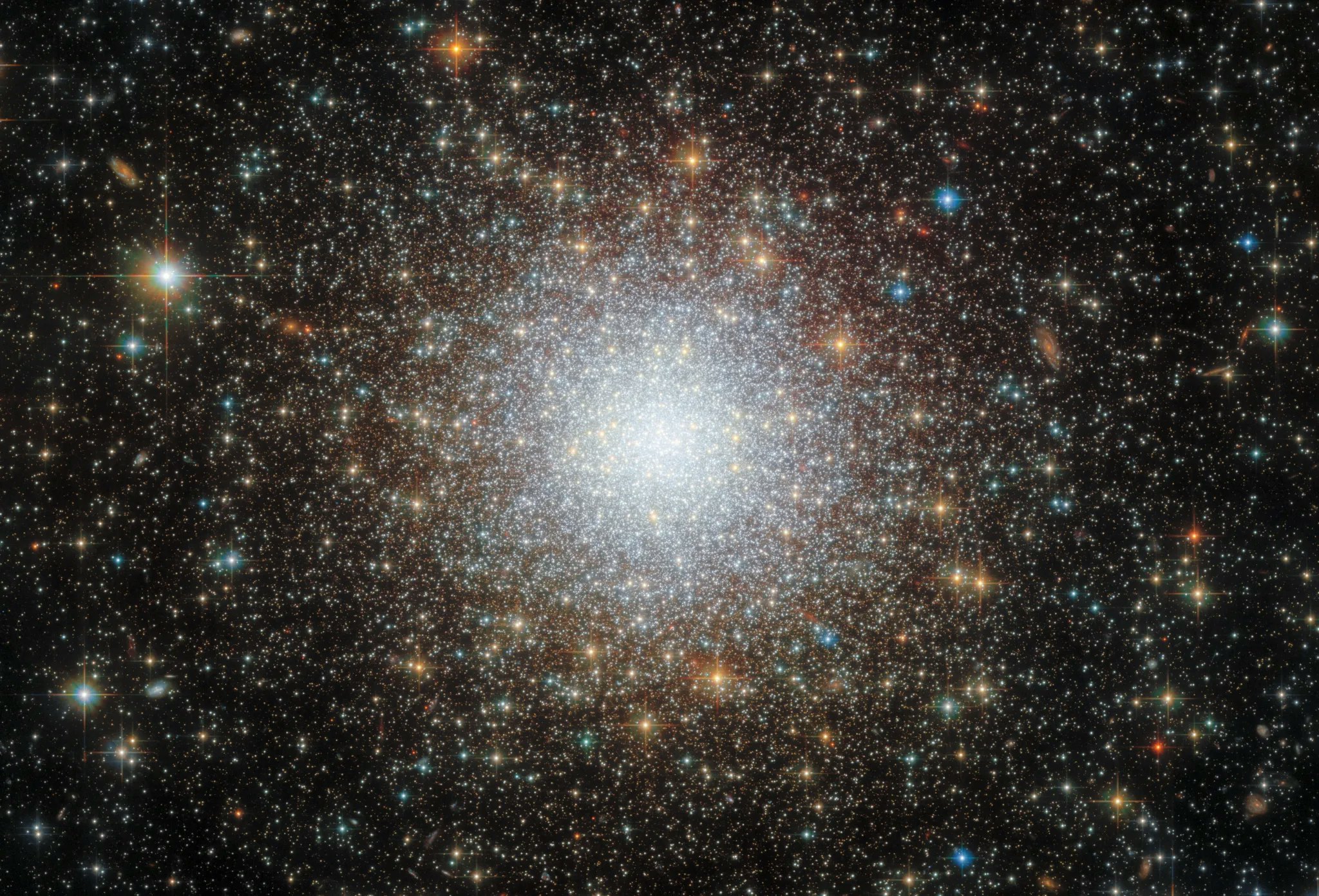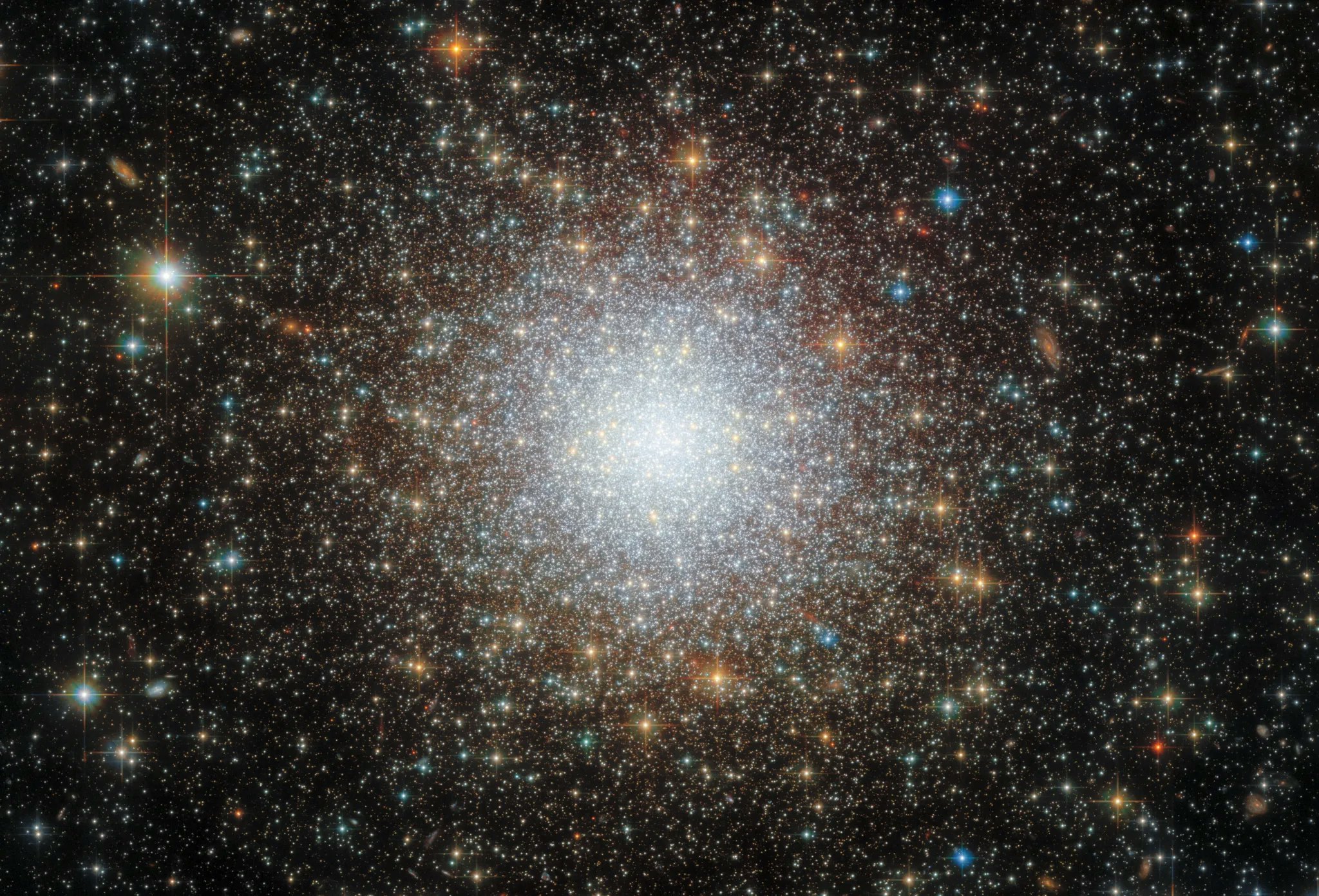
The Hubble Space Telescope finessed the light beaming in from outside our galaxy, and the result is a fabulous image where individual stars are seen in a big embrace.
When thousands or even millions of stars huddle together, it's usually because their gravities are pulling them all towards each other. This gravitational pull creates pockets of stability in space where stars and their descendants aren’t floating away.
According to NASA, which runs Hubble alongside the European Space Agency, this security leads to a retention of star populations that are really old. These places, called globular clusters, are like old buildings. They are filled with clues about what came before the modern universe.
In a new image, Hubble peered into a globular cluster outside the Milky Way. The 33-year-old telescope looked towards the southern sky, and into a region called the Large Magellanic Cloud. Although it resembles the smudge a finger leaves behind on a window, it’s actually a satellite galaxy. The gathering of stars in the new image is located about 157,000 light-years from Earth, near the constellation Dorado (The Swordfish).

What’s it like inside a globular cluster?
This dazzling globular cluster, packed with a myriad of different stars, is called NGC 2210.
Globular clusters are special places. “The night sky would look very different from the perspective of an inhabitant of a planet orbiting one of the stars in a globular cluster’s center: The sky would appear to be stuffed full of stars in a stellar environment that is thousands of times more crowded than our own,” according to an image description that NASA published on Friday.
What can astronomers learn here?
Recently, astronomers analyzed the light coming from NGC 2210 and found evidence that this particular globular cluster is quite old. At about 11.6 billion years old, its estimated age suggests the cluster is just a few billion years younger than the universe itself.
But that’s not the oldest one astronomers have found. Some other clusters inside the Large Magellanic Cloud may be more than 13 billion years old. (For context, the universe is 13.8 billion years old.)
This matches somewhat with the ages of the oldest globular clusters inside the Milky Way. If astronomy can be compared to archaeology, this means that these globular clusters are like ancient edifices that were erected at the same time, although they are now found in different galaxies.







